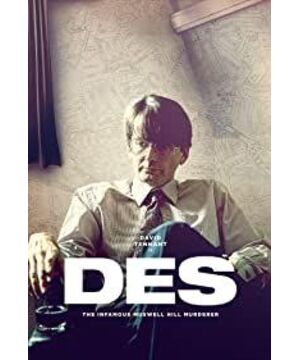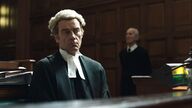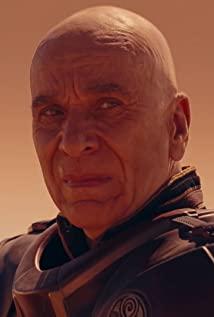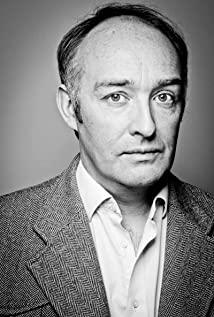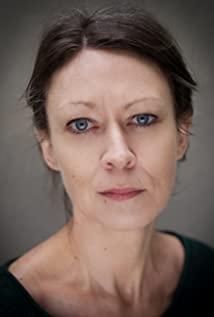Serial killers have always been the most popular "top stars" in film and television works, from Jack the Ripper to the Manson family, from the B-level film "Moonlight Panic" to the Oscar masterpiece "Silence of the Lambs", from "American Horror" Story: 1984" to "Mind Hunter", the low level meets the darkest physical stimulation needs, and the high level opens up the deepest psychological desire to kill. In "Mind Hunter", David Fincher subtly used the form of road films combined with the way he is best at psychological suspense thrillers to re-deconstruct "serial killer", to some extent "Zodiac" an extended version. While creating a gloomy, psychedelic, and depressing atmosphere of wonderland, through the description of the situation and changes of three characters with different ages, genders, sexual orientations, family environments, and educational levels in this "chasing" truth whirlpool , discusses the economic, cultural, social and environmental responsibilities in "creating serial killers".
It is worth noting that "serial killer" was born in "batch" in the 1970s and 1980s when the American economy and social culture were changing rapidly. Along with the case, the word itself was born. There has never been a special one before. A vocabulary to describe all murderers who commit crimes in a similar manner, in a patterned manner, over a certain period of time.
They are disordered, psychological, random, unintelligible, unpredictable, and have some kind of strange "beauty" evil from human nature, which cannot be reasoned and judged with normal logic, and what is even scarier is that they This kind of "evil" may be lurking in everyone's heart, and no one knows when, where, what, who and why will trigger it.
"Sherlock" and "Black Mirror" let us appreciate the charm of the British three-episode films, which are short and concise, the level of attention to visual language and the depth of content and thought, which make most movies feel inferior, but these two drama lists The episodes are all 90 minutes in length for a standard movie.
And ITV's latest three-episode "Dance" successfully condensed a single episode into the length of a standard TV unit drama of 47 minutes, but still maintains the same or even better level as the two previously mentioned dramas , can be said to be a reminder to the more and more "free" creators who grasp the time, do we really need to write such a long story?
Based on a true story, "Dance" tells the story of the famous British/Scottish serial killer Dennis Nelson, who reportedly killed 15 young men between 1978 and 1983, the youngest of whom was only 14 years old , he dismembered the victims and buried them in the garden of the rented house or in various corners of the room.
He has a serious necrophilia, is a homosexual, once worked as a policeman, and later worked in a job-hunting center in London. He is an ordinary-looking middle-aged man. In the play, the detective who followed him used the common word unremarkable when asked by reporters how to describe the natural born killer.
Unlike other films about serial killers that open with deaths, cases, courtrooms, etc., the opening scene of "Dance" has nothing to do with murder at all, but a set of quick news clips that tell the story of England in the 1980s with the grim tone of news reports. The economy is down, unemployment is rising sharply, young people are confused, and the current state of social depression is a stark contrast between homeless people sleeping on the floor, punk singers, delinquent teenagers, group rental youths, and the neon city-London.
And this has also established the tone of "Dance" which is completely different from ordinary crime or suspense films. You can't even classify it as a crime film. It is more like an ethics that borrows "ancient" (the 1980s) to describe the present. Moral films, or even sociology films or philosophical films, if there is such a genre. The long lines and dialogues are actually philosophical speculations, discussing identity, good and evil, money, politics, and human nature.
This is also the reason why the show did not spend any ink on the suspenseful setting of the case. It tries to explore what caused such a result instead of presenting the result itself. Therefore, there is basically no direct relation to the case or the deceased in the show. For the relevant pictures, everything is basically completed by the narration of the relevant parties, making the whole thing more like a documentary.
The deceased appeared in dispassionate photos and files. This arrangement further exaggerated the indifference between people, and made death even more horrifying and sad. This kind of horror and sadness is not cheap sensationalism. It is a bystander and unattended criticism of social values and the environment that ignores the living. It is the loss and disappointment of human nature and society from the system to the individual, and it is the lamentation and despair from the inside out.
The whole film has been trying to explore the ambiguity and deviation of current social identity from an existential perspective. At the beginning and the end, two characters are used to complete the opening and closing of the theme. With so many people missing, the police are ignorant to ask questions, and at the end there is a biographer who tells the point. This story is a warning, thinking about how a silent ordinary person can become a killer.
In order to match this cold and icy background and perspective, this film is very restrained in camera movement, plot, performance, lighting and editing, and spends a lot of brush and ink on the details, and uses the language of the lens to describe It highlights and expresses the psychology of the characters, breaking through the basic narrative mode constructed by many previous works of the same type.
For example, the process from receiving the report to catching the murderer was completed within 10 minutes. There was no battle of wits or chasing gun battles, and there was no psychological warfare like Hannibal. The killer, played by David Tennant, eats a meal.
In fact, the whole play is filled with such an ordinary, undisturbed, plain tone, just like the murderer's zero expression of world-weariness from beginning to end, the tone of talking about where the body is without hesitation, in the interrogation room The cannonade-like confession, as if waiting for the police to find out, is as commonplace as it is about washing a shirt when talking about the brutal murder process.
And this deliberately de-dramatic expression gives the audience more space, so that the lines and various details are highlighted, instead of being immersed in the pure so-called brain-burning and audio-visual stimulation. Because of this, you can see the tension of the characters and the attitude that the screenwriter and director are trying to make the audience hold in the scenes where the virtual and the real are converted and the corresponding arrangements before and after.
For example, the landlord who found human bones and reported the crime couldn't wait to question the police and the media to deal with the entertainment exploitation by the murderer. For example, in the final courtroom scene, Karl, who was forced to testify against Dans in court, said a very real self-question and question when the opponent's lawyer asked whether he believed that a person who treated him tenderly was a killer: "I am also very puzzled, he Is it the perpetrator or the savior", but because of his identity as a cross-dressing dancer, the onlookers sneered and shouted "he should kill you".
Carl in the lens goes from light to darkness, the lens changes from focus to defocus, and the noise of the camera and the crowd changes from solid to empty at the same time. The questioning from the heart formed a contrast, so that the characters who only played for a total of about 5 minutes had arcs.
The criticism of the system, the upper management and the system was successfully completed through only two dialogues between the police detective and the upper management, and the reversal was used appropriately. The use of light is also full of meanings. The high-level police figures who should maintain goodness are always in a state of semi-shadow or full shadow, while the murderer who represents evil is often in a state of full light. Corresponding to the hypocrisy of the high-level and the magnanimity of the murderer, it forms a clear pattern. The contrast completes a powerful satire of reality.
From Heraclitus talking about "Don Quixote", from the rabble to Downing Street, through the mouth of a murderer who seems to be indifferent to life, he tells the cruel reality that "death is more valuable than life" driven by capitalist money , this thoroughness with a natural sense of conflict not only conforms to its abnormal psychological logic, but also blurs the boundaries of human nature, giving the audience another huge impact in terms of emotional recognition and reflection on the status quo.
And "name" is another representation of "identity", and it is also the dark line of this film. It is not to find out who the murderer is, but to find out who the deceased is. In holding up the murderer, it is really just using the murderer's mouth to speak for the deceased. How is a society that no longer respects life and identity better than the fatal blow of a serial killer?
In addition, the frame structure in the camera is used countless times in the series to metaphorize the characters' distress and confusion. For example, in the last scene of the detective and the killer, it was supposed to be the detective's "victory" moment, but at the end, the killer was given a complete back without any prospect, and instead the detective was confined to iron. Behind the door, as if he is the one who is about to lose his freedom, this set of dislocated contrasts tries to imply and provoke the audience to think, is the hypocritical and indifferent society itself brighter and freer than the prison?
To a certain extent, the sense of horror brought by "Dance" is more similar to "Midnight's Bell" than "Silence of the Lambs", which reveals the secret, long, unfinished, stamina and Undeniably, it tries to arouse the society's re-emphasis on "life" in the re-questioning of the meaning of "death".
In the end, the whole film ends with an obituary in black letters on a white background, leaving the regret of 7 or more deceased people whose names may never be known. We don't know if we're going to be natural born killers, and we don't know if we'll still be seen if we disappear.
If everyone is alive and is no longer seen by this society, then who or what is left in the society in the end? This may be a question that the main creators have not been able to answer, and what they can do is probably just record, present, organize and reconstruct, just as the detective in the play did, otherwise, if we don't record ourselves, who will Will it be recorded?
- END -
Out of control Algernon, a dilemma in social networks
movies, not so great
Yaobai, a total collapse
Dutch brother X Star Lord CP comes true, this animated version of "The Force of Evil" is worth your money
Long live Ferrari! This ** is called Fast and Furious
This movie is not a "fantastic skill" as they say, but an exploration and return to the essence of the movie
This Year's Best or Millennial's "Love in the Time of Cholera"
The science fiction "evil" taste of Hua Fei Hua film masters
The ultimate romance at the end of the universe, the intoxication that only adults can experience
HAIL HITLER, I am not your kitsch life
Portrait of a Burning Woman, Call Me by Your Name, Second Sex - Part 1
Portrait of a Burning Woman, Call Me by Your Name, Second Sex - Part 2
Made in Northern Europe after SKAM
LOST AND FOUND, the king of horror novels "pitted" by book editors
Look at the world with prejudice, only food and love can't live up to it
Why is America not the greatest country in the world?
ORDINARY LOVE, the sad song of the little people
The female version of "True Detective"? No! is an unbelievable fact
View more about Des reviews


